When choosing a finishing technique, media blasting emerges as a top contender. Media blasting encompasses various methods such as sandblasting, plastic abrasive, and bead blasting. Each technique has its advantages and disadvantages. In this article, the focus will be on the bead blast finish.
This article aims to provide a detailed guide on what is bead blasting, exploring its process, materials used, and how to achieve an outstanding bead blast surface finish. Moreover, it will delve into the pros and cons of this technique to help readers determine if it is the right choice for their applications. Valuable tips will also be provided to ensure the best results when needed to bead blast finish.
Bead blasting is an abrasive technique where media is projected onto a surface. It is commonly performed using a bead blast cabinet that utilizes compressed air to propel the media. These cabinets provide a controlled environment and help prevent the spread of dust or contaminants.
Round glass beads are frequently used as the media of choice in bead blasting. Unlike other forms of media blasting that use angular-shaped media, bead blasting glass relies on spherical-shaped media. When these rounded beads make contact with the surface of a part, they create small indentations or dimples. Over time, thousands of these dimples form consistently across the surface.
Using finer grades of beads results in a bright surface finish with a matte or satin-like texture, as the dimples reflect light in a particular way. On the other hand, coarser beads can be employed to obtain a rougher yet uniformly textured surface.
Bead blasting is a technique that shares similarities with other abrasive blasting methods, involving projecting a sphere or glass bead blaster onto a substrate. However, what sets bead blasting apart is its use of jagged media to achieve a coarser bead blast surface finish. When a glass bead for blasting impacts the surface of a component, it creates a uniform finish by dimpling the material's surface.
The bead blast finish is particularly sought after when there is a need for a smooth and consistent appearance, leaving a "dull" or "satin" finish on the part. In some cases, bead blaster guns also provide tension conditioning for the treated component.
If you are aiming to achieve a finish that combines roughness with uniformity, bead blasting should be among your top choices. Glass beads for blasting are commonly employed in surface finishing for 3D printing applications, where fine glass beads are used to create dull or satin finishes on various materials.
On the other hand, coarse glass bead blasting is suitable for achieving a uniform and "rough" bead blast finish on the material surface. Additionally, they can help conceal imperfections present on the substrate surface. Unlike other media like garnet or aluminum oxide, which produce darker finishes, bead blasting preserves the component's base color and results in a brighter surface finish.
When seeking a processing facility for a bead blast finish, it is crucial to have a clear understanding of the material that will undergo the blasting process. Different facilities employ varied procedures to accommodate different materials, including stainless steel, aluminum, copper, brass, and more. The selection of the appropriate facility is crucial for achieving the desired quality in the finishing of stainless steel. This article will outline the benefits and drawbacks associated with each material type. Armed with this knowledge, you can confidently find the right processing facility to meet the requirements of your project.
Stainless steel is well-suited for a bead blast finish, as it results in a textured surface with a fine dimpled pattern. This finish minimizes the appearance of fingerprints on clean surfaces. However, it is important to note that dust particles and hand oils can adhere to the texture and become visible over time. Daily cleaning is recommended to prevent fingerprints from settling on the surface. Alternatively, the application of a fingerprint-resistant coating material can offer enhanced protection and minimize the need for frequent cleaning.
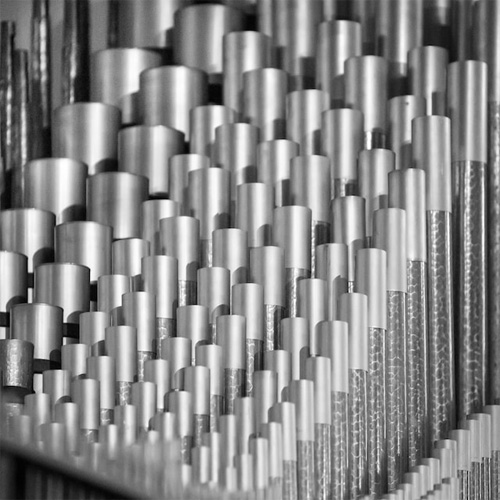
Bead blast finishing using glass beading is an excellent method for achieving desired surface finishes on aluminum parts. This process is capable of producing a range of finishes, such as peened, satin, and semi-polished, on sheet metal components. Glass beads are available in different sizes, making them particularly well-suited for aluminum parts. Coarser glass blasting beads are ideal for achieving a rougher surface finish, which may be desired for certain applications.
Bead blasting can produce different finishes for copper surfaces, ranging from uniform, smooth, and shiny to textured and matte. Glass beads, with their round spherical shapes, are less aggressive and better suited for achieving a uniform, matte finish on copper.

Similar to copper, bead blasting can provide a range of finishes for brass surfaces. The choice of media and blasting process can achieve effects such as a uniform matte finish or a satin-like appearance that enhances the overall appearance of brass components.
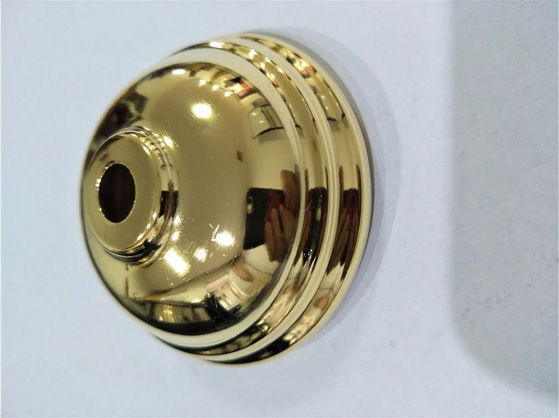
Bead blast finishing plays a vital role in manufacturing aluminum alloy components. The process helps create high-quality surfaces that are resistant to corrosion and wear. It is commonly used on various types of aluminum, including sheet metal and rods. Bead blast finishing is particularly valuable in industries like aerospace, where components require a strong and durable finish.
To achieve the best result from your bead blasting process, you need to ensure that you use the most effective tooling. There are several tools commonly used for bead blasting. These tools are essential for performing the bead blasting process and achieving the desired finish. Here are some of the main tooling used:
1. Bead Blasting Machine
Bead blaster cabinets serve as the designated location for carrying out the bead blasting process. To ensure its effectiveness and the safety of the operator, careful consideration must be given to the quality and construction of the cabinet. It is crucial to select cabinets crafted from sturdy materials like steel, which provide exceptional durability and longevity. Weak legs should be avoided, and instead, robust and durable legs should be securely welded to the cabinet. The legs must be capable of supporting the weight of the cabinet, the parts being blasted, and the bead media used. Stability is crucial to prevent wobbling, which could pose dangers to the operator and result in frustrating breakdowns during work. When opting for a glass bead cabinet specifically, aspects such as construction quality, leg strength, stability, effective sealing to prevent dust and debris escape, ventilation, clear view windows with replaceable protective sheets, and overall suitability for the bead blasting process must all be taken into account.
2. Abrasive Media
various types of abrasive media can be used. Some common types include:
Glass Beads
Glass beads for sandblasting are a type of abrasive material made from spherical, lead-free soda-lime glass. These glass beads are specifically designed for use in the sandblasting process. As they are softer in comparison to other abrasive media, they provide a gentle yet effective means of removing coatings, paint, rust, or other surface contaminants from a wide range of materials. sandblasting glass beads can be recycled multiple times, making them an environmentally friendly choice. They are available in various sizes or grits, allowing for different levels of surface texture and finish to be achieved during the sandblasting process.
Steel Shot
Steel shot is made of small steel beads and is highly durable, often reusable for many cycles. It is commonly used for cleaning, de-rusting, stripping, and shot peening applications on steel and cast iron.
Aluminum Oxide
Aluminum oxide is a tough and abrasive grit media that is effective at cutting into and etching even the hardest materials. It is often used to prepare surfaces for paint, round sharp edges, and provide a consistent matte finish. The finish roughness can be adjusted by selecting the appropriate grit size.
Plastic Media
Urea-based plastic media is gentle, reusable, and lightweight. It is commonly used for cleaning, stripping, de-flashing, and deburring delicate parts or materials without causing damage. However, it may not be suitable for achieving cosmetic finishes.
3. Bead Blasting Gun
The bead blasting gun is used to propel the abrasive media onto the surface being blasted. It is typically connected to an air compressor and allows for precise control of the blasting process. The gun may have different nozzle sizes to achieve the desired blasting effect.
4. Air Compressor
An air compressor is used to provide the necessary pressure to propel the abrasive media through the blasting gun. The air pressure can be adjusted to control the intensity of the blasting process.
5. Personal Protective Equipment
Safety is paramount in bead blasting. It is essential to wear appropriate PPE, including gloves, safety glasses or goggles, and a respirator, to protect against the dust and debris generated during the blasting process.
6. Media Recovery System
To minimize waste and facilitate recycling, a media recovery system can be used. This system collects used media, separates it from debris, and allows for its reuse in future blasting operations.
Is glass bead blasting near me? If you're contemplating the suitability of glass bead blasting, you're among many others who are considering this option. Glass bead blasting can achieve a smooth, textured surface with a satin or semi-polished appearance. This technique is especially advantageous for treating delicate materials like wood, stone, and metal. The non-directional nature of glass bead blasting ensures the preservation of delicate substrates, making it a safe option even for the most fragile materials. Here are some advantages of the bead blast finish.
Glass bead blasting is a highly efficient method for achieving a consistent, smooth, and matte finish on aluminum and magnesium alloys. The process involves applying fine glass beads onto the part's surface using high air pressure. This results in a bright and satin finish that is particularly beneficial for restoring classic cars. Glass bead blasting is not only fast and cost-effective but also ensures a uniform appearance, making it an ideal choice for achieving a desired matte finish on various parts.
The Bead Blast finish creates a visually appealing non-directional textured surface that exhibits a soft satin reflection. This versatile finish is well-suited for various applications, including roofing and wall panels. Additionally, it can be further enhanced with an anti-fingerprint coating for interior use. The advantages of this finish are numerous and encompass its aesthetic appeal and versatility. For further insight into the Bead Blast finish and to see examples of its application, continue reading.
The bead blast finish is a flexible and adaptable surface finishing method that safeguards delicate substrates. By propelling high-pressure glass or steel beads onto the surface, this technique creates a consistent matte texture that presents a soft and low-reflectivity appearance. It can be effectively combined with other high-polish finishes to achieve desired outcomes. The bead blast finish serves as a protective measure, particularly for fragile substrates such as glass and wood.
A popular surface finishing technique utilized across industries is media blasting, which involves the use of various abrasive particles such as sand, glass, or plastic. The resulting finish depends on factors like the size and disposal of the blasting media. In general, smaller particles yield smoother textures and impressions. Other variables such as blasting conditions (speed, intensity, and distance) also influence the final output quality. This versatile process finds applications in tasks like concealing scratches, addressing imperfections, and enhancing slip resistance.
This finishing technique offers versatility, stemming from the broad range of materials that can be subjected to blasting and the diverse selection of media available for the process. Bead blasting can employ various media sizes, including small glass beads for faster and easier operations, and medium-sized glass beads that prove most effective for aluminum and stainless-steel parts. In general, this technique is well-suited for parts requiring a uniform and matte finish, while larger glass beads are particularly useful for concealing surface imperfections.
The Bead Blast Finish is a versatile technique used for multiple purposes such as cleaning, peening, achieving a sheen surface finish, and general cleaning of tarnished components. This process entails the use of rounded media that impact the surface, creating small craters and giving the component a dimpled appearance. It effectively restores the condition of corrosion-resistant components and yields a smooth and even finish. It is worth noting that glass beads are generally preferred over steel shots in this process.
1. Surface Roughness
One potential disadvantage of bead blast finishes is that they can result in a rougher surface texture compared to other finishing methods. The impact of the beads on the surface can create dimples or pits that may not be desirable for certain applications or aesthetic preferences.
2. Limited Control over Finish
Bead blasting may offer limited control over the final finish achieved. The size, shape, and hardness of the beads, as well as the blasting parameters used, can impact the appearance of the finish. Achieving specific surface finishes or textures may require additional steps or alternative finishing techniques.
3. Difficulty in Cleaning
The textured nature of bead blast finishes can make them more challenging to clean and maintain compared to smoother finishes. The dimples and crevices created by the bead blasting process can trap dirt, debris, or contaminants, requiring extra effort in cleaning and regular maintenance.
4. Potential for Abrasive Contamination
Bead blasting involves the use of abrasive media, such as glass beads or ceramic beads. While these materials are generally safe for use, there is a risk of abrasive contamination if any beads are not properly removed from the finished product. This contamination can lead to issues such as premature wear, corrosion, or damage to sensitive components or surfaces.
When it comes to obtaining top-notch finishing services for your applications, bead blasting finish stands out as an excellent choice. However, entrusting your project to the wrong hands can lead to undesirable outcomes. That's where the expertise and experience of Richconn come into play.
With extensive years in the industry, Richconn has established itself as a reputable provider of cost-effective surface finish solutions across a wide range of industries. From metal plating to an extensive selection of materials and finishes, we have the capability to meet your unique requirements. Our team of experts collaborates with you to develop a tailored metal finishing procedure, ensuring high-quality results that align with your specific needs. Customer satisfaction is our utmost priority, and we offer all our services at competitive rates. Take the first step today by reaching out to us or uploading your design file, and we will swiftly provide you with an instant quote and promptly commence work on delivering exceptional services.
In most cases, bead blasting projects result in dull finishes, often with a slight satin sheen, which typically falls short of desired outcomes. However, the increasing popularity of glass bead blasting in recent years can be attributed to the advantages it offers in manufacturing processes. While many people primarily associate glass beads with restoring parts and using them to remove rust, dirt, and scale, they also have the potential to produce exceptional bead blast finishes. With that being said, let us now explore some helpful tips to achieve the best possible bead blast finish.
Use Low Pressure
Starting at around 50 PSI (3.5 Bar) is usually recommended as a good starting point. It is crucial to note that glass beads perform best at lower pressures, so the pressure should be kept as low as possible. By doing so, you can achieve a longer lifespan for the glass beads and obtain superior surface finishing results.
Using a pressure of 50 PSI with a siphon blaster is an ideal combination to achieve optimal outcomes. It is essential to understand that glass beads are designed for polishing or burnishing rather than cutting. However, they can accomplish these tasks more efficiently than other tumbling media. When the pressure is increased, the beads begin to collide forcefully with the components, resulting in bead crushing and higher processing costs.
Moreover, blasting glass beads at high pressure generates excessive dust, debris, and sharp particles. These particles can accumulate inside the cabinet and contaminate the remaining clean beads. As a consequence, the quality of the finishes can deteriorate. Additionally, higher-pressure bead blasting can cause a significant amount of these crushed particles to embed themselves onto the surface of the components. Therefore, caution is advised when using high-pressure bead blasting on critical components, such as internal engine parts, to avoid potential issues and contamination.
Remove any Existing Rust or Oxide Layers
Before achieving a great bead blast finish on aluminum, it is essential to remove any existing rust or oxide layers. These oxide layers are typically too hard to polish or burnish and can make it challenging to remove stains effectively. While there may be a slight shine to the oxide layer, it will resemble a stained shine rather than a desirable finish. It is crucial to note that glass beads are not suitable for stripping off or eliminating oxide layers. Their design does not allow for cutting or abrasive action.
Instead, it is recommended to use a sharp cutting abrasive to effectively strip off the oxide or rust. Options such as black beauty aluminum oxide or crushed glass can be utilized for this purpose. Crushed glass is often preferred because it offers a fast process similar to silicon carbide or aluminum oxide. Additionally, crushed glass provides a clean result, leaving behind a brighter finish on metal surfaces. Regardless of the chosen abrasive for oxide removal, it is important to select a material with consistent cutting ability. Some coarser abrasives with strong cutting action are effective for removing heavier scales or oxidation layers.
Glass bead blasting, utilizing specialized acrylic beads, provides semi-polished, peened, and satin finishes on metal parts. This versatile surface finishing technique is applicable for various purposes and is effective on different materials. An important advantage of bead blasting is that it does not alter the dimensions of the product.
If you are seeking the finest bead blast finish for your parts, don't hesitate to reach out to the experts at Richconn or request a quote today. We are committed to taking your project to the next level and delivering exceptional results.
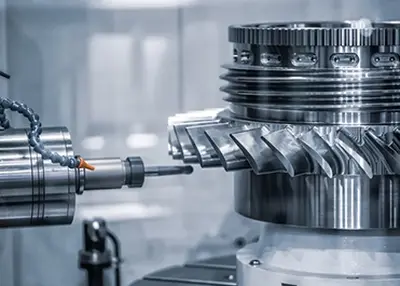 Cast Aluminum vs Machined Aluminum: Unveiling the Crafting MarvelsNovember 13, 2023In the realm of metal fabrication, the choice between cast aluminum and machined aluminum holds the key to unlocking a world of possibilities. As a CNC machining service provider, we, at Richconn, understand the importance of making informed decisions in the manufacturing process. Let's embark on a journey to explore the nuances of these two techniques, dissecting their processes, comparing their performance, and uncovering their diverse applications.view
Cast Aluminum vs Machined Aluminum: Unveiling the Crafting MarvelsNovember 13, 2023In the realm of metal fabrication, the choice between cast aluminum and machined aluminum holds the key to unlocking a world of possibilities. As a CNC machining service provider, we, at Richconn, understand the importance of making informed decisions in the manufacturing process. Let's embark on a journey to explore the nuances of these two techniques, dissecting their processes, comparing their performance, and uncovering their diverse applications.view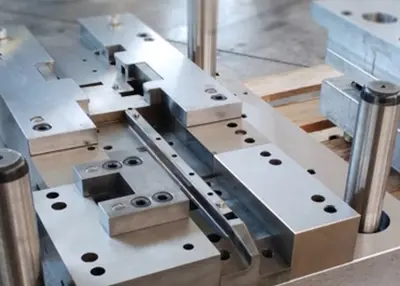 Experience Sharing on Design and Manufacturing of Metal Stamping DiesJuly 21, 2023Here, we will share some specific design and manufacturing experiences to provide our understanding of dies accumulated over the years. Through this article, we hope to give you a better understanding...view
Experience Sharing on Design and Manufacturing of Metal Stamping DiesJuly 21, 2023Here, we will share some specific design and manufacturing experiences to provide our understanding of dies accumulated over the years. Through this article, we hope to give you a better understanding...view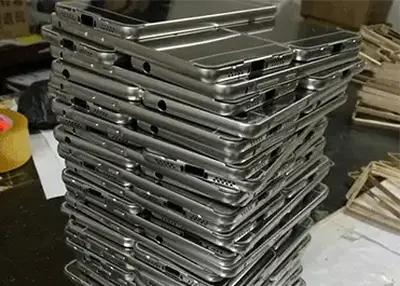 Manufacturing Process and Selection Guide for CNC Processing iPhone CasesNovember 14, 2023In a world where Precision Machining innovation, Richconn stands as a pioneer in CNC machining technology, redefining the landscape of iPhone protection. Dive into the intricacies of CNC machining for iPhone cases and discover a realm where design meets durability, guided by a commitment to excellence.view
Manufacturing Process and Selection Guide for CNC Processing iPhone CasesNovember 14, 2023In a world where Precision Machining innovation, Richconn stands as a pioneer in CNC machining technology, redefining the landscape of iPhone protection. Dive into the intricacies of CNC machining for iPhone cases and discover a realm where design meets durability, guided by a commitment to excellence.view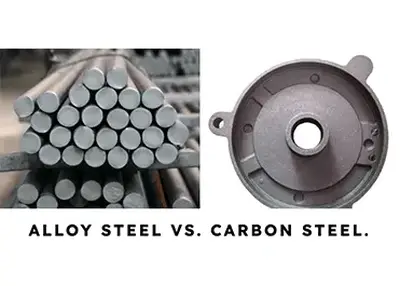 Alloy Steel vs Carbon Steel: What are the Differences and Advantages?November 27, 2023Steel is one of the most widely used materials in various industries, such as construction, automotive, aerospace, and manufacturing. Steel is an alloy of iron and carbon, but it can also contain other elements to enhance its properties and performance.view
Alloy Steel vs Carbon Steel: What are the Differences and Advantages?November 27, 2023Steel is one of the most widely used materials in various industries, such as construction, automotive, aerospace, and manufacturing. Steel is an alloy of iron and carbon, but it can also contain other elements to enhance its properties and performance.view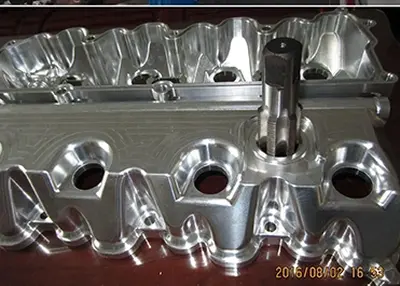 Exploring the World of Cold Machined Parts: Unveiling the Secrets of Performance and ManufacturingNovember 14, 2023In the realm of precision engineering, the term cold machined parts sparks curiosity and a quest for knowledge. As we delve into this intricate domain, my aim is to unravel the mysteries surrounding these components, providing you with a comprehensive understanding of their technology, applications, and performance.view
Exploring the World of Cold Machined Parts: Unveiling the Secrets of Performance and ManufacturingNovember 14, 2023In the realm of precision engineering, the term cold machined parts sparks curiosity and a quest for knowledge. As we delve into this intricate domain, my aim is to unravel the mysteries surrounding these components, providing you with a comprehensive understanding of their technology, applications, and performance.view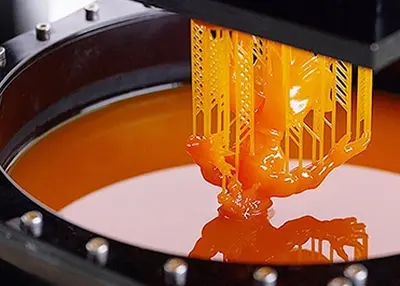 How to Switch Between 3D Printing and CNC Machining When Manufacturing Plastic Parts.October 18, 2023Not so long ago, prototyping and low-volume parts manufacturing was a fairly costly and time-consuming process. You sent a paper drawing to the precision machine shop of your choice, briefly discussed the delivery date and price with the owner or shop manager, and waited. If it had to be done quickly, one paid overtime to get the parts sooner, but prototyping was still a test of patience. You got real parts, but at the cost of valuable production time and money.view
How to Switch Between 3D Printing and CNC Machining When Manufacturing Plastic Parts.October 18, 2023Not so long ago, prototyping and low-volume parts manufacturing was a fairly costly and time-consuming process. You sent a paper drawing to the precision machine shop of your choice, briefly discussed the delivery date and price with the owner or shop manager, and waited. If it had to be done quickly, one paid overtime to get the parts sooner, but prototyping was still a test of patience. You got real parts, but at the cost of valuable production time and money.view